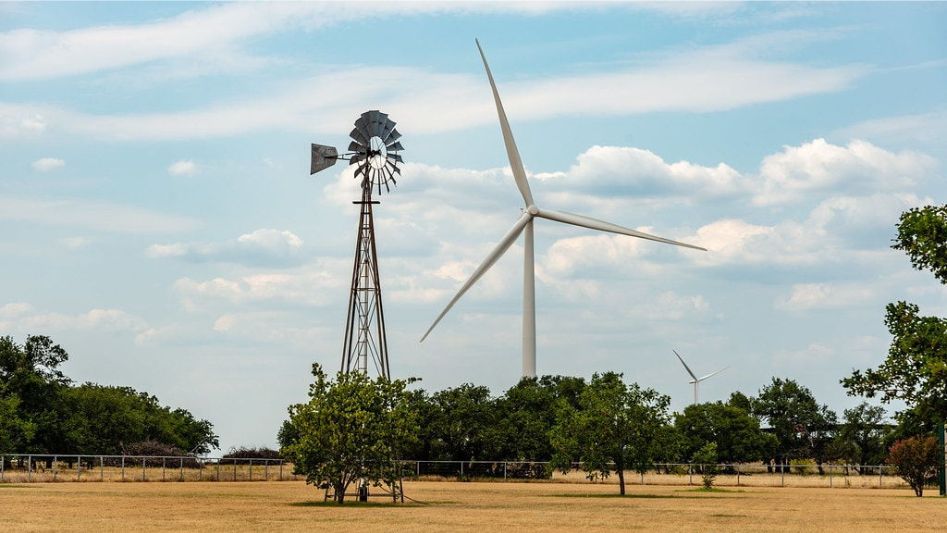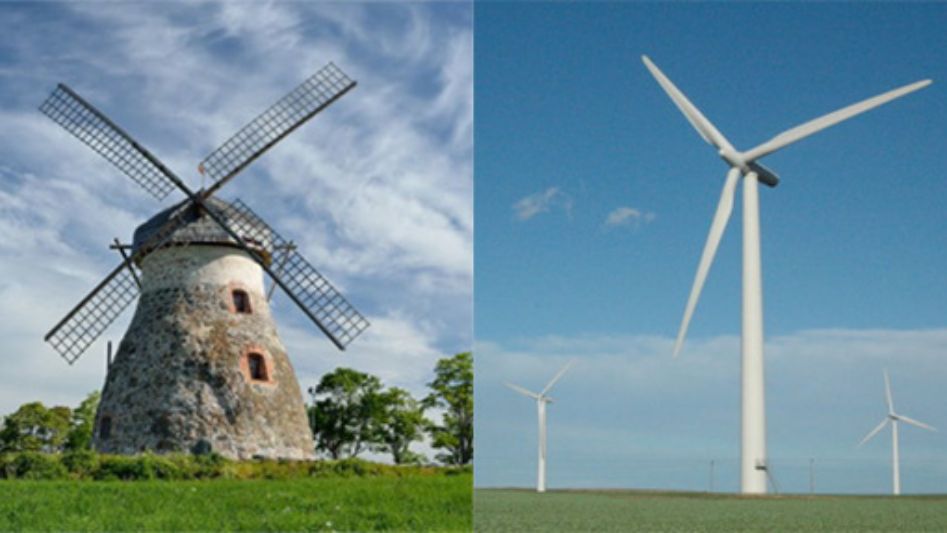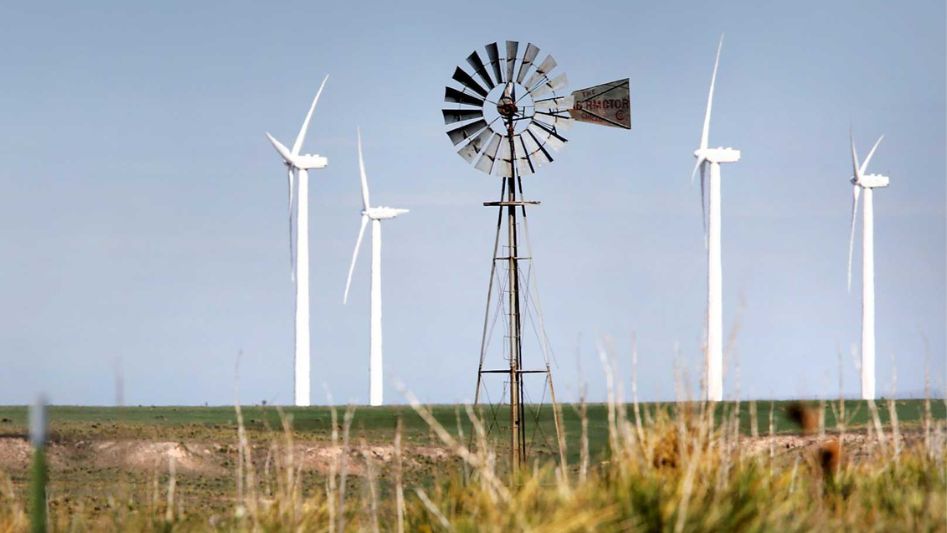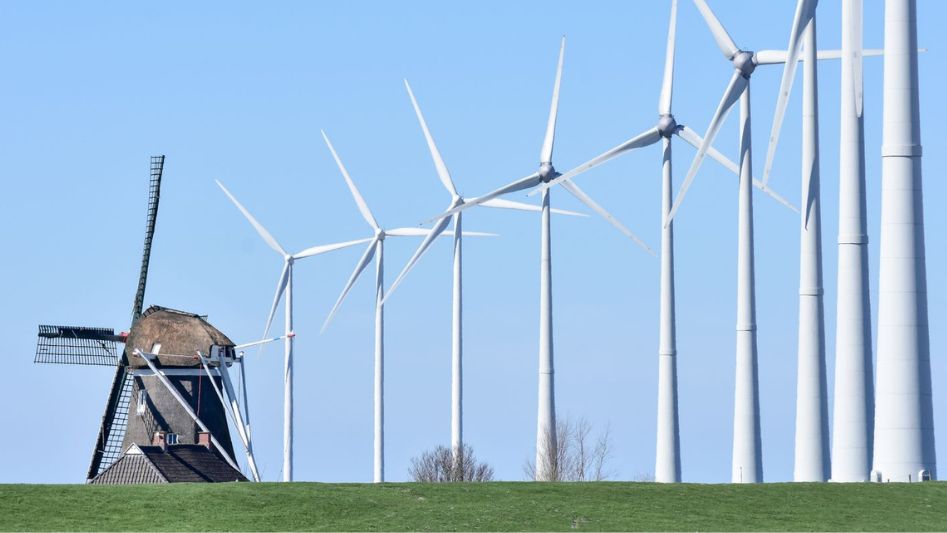Wind turbines uses the wind to convert wind energy into electricity. They are much taller than windmills, and have blades that turn to generate electricity.
Table Of Content
- How do windmills work?
- History of the Windmill
- How do wind turbines work?
- History of Wind Turbines
- Length
- Height
- Wind Turbines and Wildlife
- Key Differences
- Conclusion
- FAQ
- You May Also Like
- External Links
Even though many people use the phrases interchangeably, a windmill and a wind turbine are not the same thing and have quite distinct structures and functions. The use of the wind to mill grains into flour, operate machinery, or transport water is the primary function of a windmill, which is a very ancient kind of technology. Wind energy may be converted into electricity by rotating a turbine, which is what a wind turbine does

.
How do windmills work?
Windmills do not generate electrical energy; rather, they use mechanical energy, which was historically utilized in grist mills to crush grain. Sails made of sailcloth or wood are attached to vertical windmills and revolve along a horizontal axis. This kind of windmill is common in rural areas of the United States and Holland.
A millstone is rotated using gears to transmit the rotational force (torque) that is generated there. Because of this, a wide variety of applications are possible, such as milling grain, driving a shaft to pump water, operating a reciprocating saw, and making paper pulp.
History of the Windmill
It is possible that windmills date back to the ancient world; nonetheless, their earliest documented appearance was in 9th-century Persia, which is now known as Iran. Along with the rise of Islam in later centuries throughout Eurasia, windmills also made their way across the continent.
As early as the beginning of the 17th century, it was possible to see windmills pumping water and grinding grain throughout the Netherlands, the United Kingdom, and most of northern Europe. This was possible because, unlike the rivers that drive waterwheels, the wind does not freeze. The windmill later made its way to North America from that location. At the foot of Manhattan, there existed a windmill that began grinding grain as early as the year 1662.
Windmills were essential to the development of agriculture in the Great Plains and Outback regions of both the United States and Australia throughout the 19th century. They were an essential part of rural life in the United States until the 1930s, when the New Deal’s push for rural electrification largely made them obsolete. Even the ancient windmills of Holland are in a state of disrepair; they are only kept standing for the sake of tourism.
How do wind turbines work?
A machine that produces electricity by using a camshaft that is rotated at high speeds is called a turbine. An electric current is produced by the camshaft as it rotates by moving a wire back and forth across a magnetic field.
It is not only wind energy that makes use of turbines; thermoelectric power plants (such as nuclear, coal, and natural gas) also utilize them to produce electricity by boiling water to create steam, which then spins a turbine as it exits the facility. Turbines are not exclusively for wind energy. Dams on rivers or other bodies of water harness the power of gravity, in the form of falling water, to operate turbines that produce energy.
In a similar fashion, wind turbines take advantage of the rotational force provided by blades (sometimes referred to as “sails” or “vanes”) that are coupled to a camshaft, which in turn turns the turbine.
History of Wind Turbines
It wasn’t until 1887 that the very first wind turbine was put to use in order to create electricity; this was only five short years after Thomas Edison had constructed the very first electric power plant that ran on coal. James Blyth, a professor from Scotland, constructed a wind turbine so that he could store power in a battery and use it to light his house. Poul la Cour of Denmark established the world’s first wind-powered power station in 1895, supplying energy to a nearby community via the use of wind turbines. By the turn of the century, Denmark already had 2,500 windmills. Now more than ever, Denmark is a leader in the development of wind technology.
James Blyth, a pioneer in the field of renewable wind energy who is now mostly forgotten for his contributions, spent the following decade advocating for wind power, criticizing the ineffectiveness of using gas to light dwellings, and labeling coal-powered steam engines as “wasteful middlemen.” In Great Britain, where coal was relatively inexpensive despite the high human cost of production, the middlemen were victorious. The same thing would happen again the following year, when wind power finally found its way to North America; it was unable to compete with the cheap prices of coal and oil.

Length
Since the year 2000, the length of the blades on wind turbines has been steadily increasing year after year. In the same way that a bigger front chainring on a 10-speed bike creates more power, longer blades produce more energy for the generator. A Tesla Model 3 may be completely charged in only three rotations of a blade that is more than 100 meters long.
While you double the length of the blade, you quadruple the area that it covers when it rotates. This means that longer blades are more effective at capturing wind from a wider region. This implies that a greater amount of wind energy is captured with each turn of the blade, which is a significant feature given the intermittent nature of wind and the fluctuations in wind patterns that are caused by climate change. Longer blades minimize the total number of blades required for each wind farm, which results in cost savings.
Siemens Gamesa signed a contract in June 2022 with a Scottish offshore wind farm to produce the world’s longest wind turbine blades. The contract called for the production of sixty wind turbines with blades measuring 108 meters (354 feet) in length, which fell just two yards short of the length of an American football field. Each of the three blades of the turbine is capable of generating enough energy to provide an average of 800 houses in the United States with power. Despite that, we don’t expect this record to hold for very long.
Height
The towers of wind turbines are becoming taller so that they can handle blades that are getting longer. Because of this, their efficiency has also grown, which makes sense given that, in general, the higher the tower, the more wind energy that is available to be caught. Because there is less friction with the ground and a lower air density at higher altitudes, winds are stronger at such levels.
Midway through the year 2022, the tallest wind turbines reached a height of 280 meters (918.6 ft). (As a point of reference, the Empire State Building in New York City, which includes its antenna, rises to a total height of 443.2 meters (1,454 feet) in New York City, which includes its antenna, rises to a total height of 443.2 meters (1,454 feet). The world’s tallest buildings are often situated many miles offshore, out of sight from the surrounding land, and in areas with a higher propensity for high wind speeds.
Wind Turbines and Wildlife
People who are passionate about animals may be perplexed by the relevance of migratory birds and bats to the discussion on windmills and wind turbines. Traditional windmills pose a lot less of a threat in today’s world in comparison to cutting-edge, high-velocity wind turbines.
Does the likelihood of birds and bats colliding with wind turbines increase as the area that they sweep is wider and the blades are longer? Or does the slower blade rotation help to reduce the number of collisions?
It is necessary to take into consideration the death rate, the location of the wind farm, and the migratory patterns in order to accurately assess the effect on migrating species. One study conducted in California found that wider blades had no effect on the death rate of bats and birds. The researchers concluded that the higher amount of energy generated on a smaller footprint more than compensated for the increased death rate per turbine.
However, recent research carried out in Japan discovered that longer turbine blades decreased the number of bird accidents that occurred for every megawatt of electricity generated.
Larger-scale comparison studies of wind farms in a variety of places (both inside and outside of bird migration pathways) may yield results that are more conclusive. However, it is vital to bear in mind that the most significant risk to birds in today’s world is climate change, and that the correct placement of wind farms is more important than the size of the turbines themselves when it comes to safeguarding wildlife.
Key Differences
Windmills have a long history of being used on a single property for low-tech, small-scale activities. These mills have been used to grind grain, power saws, pulp wood for paper, and perform a variety of other tasks that call for mechanical energy but do not necessarily need electricity.
Wind turbines, on the other hand, are often large-scale power generators that provide energy to the grid for consumption in other locations. They, like the majority of power plants, are placed in distant areas, either onshore or offshore, and supply energy to clients who are mostly located in metropolitan areas that are located many miles away.
But in the same way that solar energy can be scaled to meet the requirements of individual households as well as those of utility-scale power plants, wind energy can do the same thing. Small-scale wind turbines that are suitable for single electricity customers are referred to as “distributed wind resources.” Examples of single electricity customers include a dairy farm that wants to offset its own electricity use or a net-zero homeowner who wants to use clean energy to live off the grid. Utilizing the strength of the wind may be accomplished in a variety of different ways.
Conclusion
Since it is renewable, wind energy has become more important to the energy infrastructure of the industrialized world. Windmills and turbines use the wind’s kinetic energy to create this kind of renewable power. Both use the wind’s energy to generate electricity, but they do it in different ways. Even though these phrases might be used interchangeably, their underlying operational principles and methods are quite different. Windmills are wind-powered devices that harness the wind’s kinetic energy and transform it into mechanical motion by using vanes. Electricity for houses may be generated in enormous quantities by turning wind turbines, which harness the kinetic energy of the wind.

FAQ
The windmill or the wind turbine—which one is better?
Their functions and uses are distinct from one another due to the fact that windmills are often used for the production of mechanical energy while wind turbines are used for the generation of electrical power. The best applications for a windmill are those that take place on farms or in other rural settings. Among these activities are the pumping of water, the processing of crops, the cutting of wood, and the grinding of grain.
What is the main difference between a wind farm and an individual wind turbine?
Smaller turbines may be used to give power to a single home or business, whereas larger turbines can provide electricity to a whole neighborhood or complex. A wind farm is a cluster of wind turbines in a single location that are utilized collectively for the purpose of producing electrical power.
Why do people refer to it as a windmill?
These early mills, which were called “windmills” precisely because they were powered by the wind, were used for just what their name suggests. The vanes, also known as blades, of a windmill would be turned by the wind, which would rotate a central shaft. This center shaft would then turn a grain mill, which is often constructed out of big, flat stones, to make flour and other grain-based goods.
You May Also Like
- Are Vertical Axis Wind Turbines Really The Future?
- What Is A Vertical Axis Wind Turbine (VAWT)?
- Wind Energy: The Unknown Facts
- What Are Wind Turbine Blades Made Of? Could They Be Recycled?
- Wind Turbines For At Home: Benefits and Challenges

